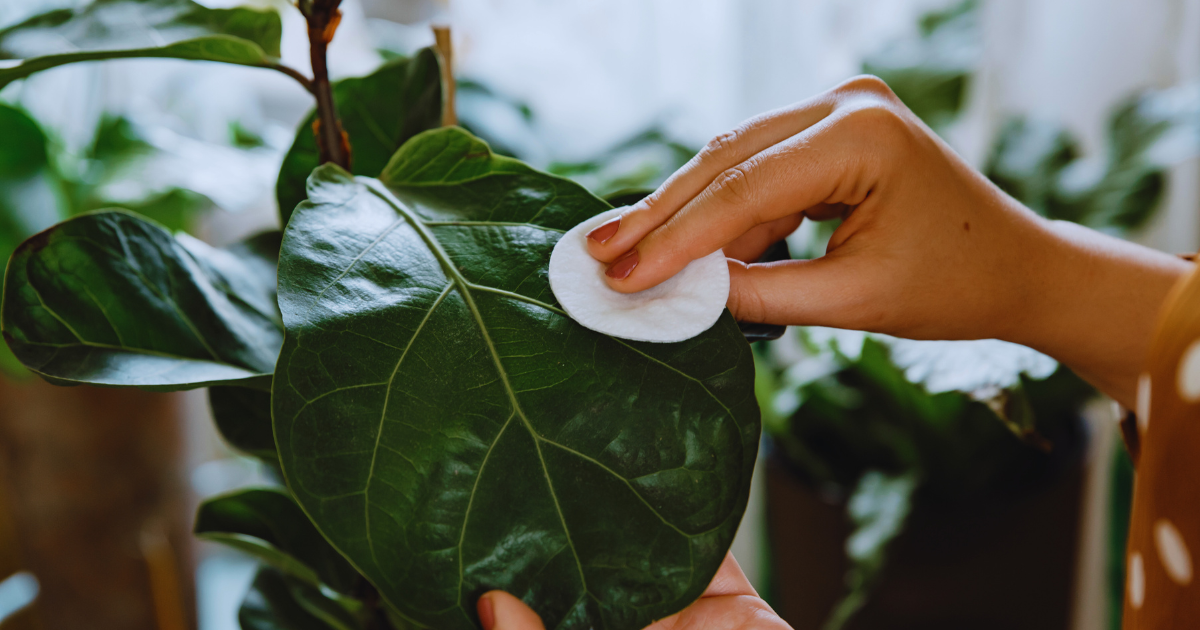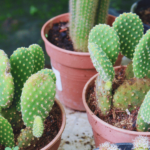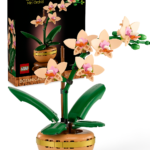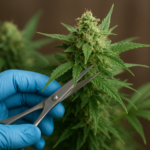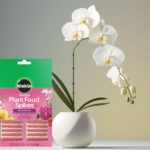If you’ve ever owned a Fiddle Leaf Fig, you know how frustrating it can be when your plant starts dropping leaves. This common issue can turn your lush, beautiful plant into a bare, sad-looking stem in no time. But don’t worry; understanding the top causes and solutions can help you bring your Fiddle Leaf Fig back to health.
Your plant might be losing leaves for several reasons, from watering problems and lighting issues to temperature changes and pest infestations. Overwatering or underwatering is a frequent culprit, as is insufficient or too much direct sunlight. Maintaining the right temperature and humidity levels is crucial, and ensuring your plant is free from pests and diseases is essential.
Addressing these common problems and adjusting your plant care routine can help your Fiddle Leaf Fig recover and thrive. Once again, with patience and proper care, your plant will reward you with stunning, glossy leaves.
About Fiddle Leaf Fig

Fiddle Leaf Fig (Ficus lyrata) is a popular houseplant known for its large, violin-shaped leaves and striking, upright growth. Native to the tropical regions of West Africa, this plant thrives in bright, indirect light and prefers a warm, stable environment with high humidity. It can grow up to 6-10 feet indoors, making it a stunning focal point in any room.
Proper care involves:
- Watering when the top inch of soil is dry.
- Ensuring well-draining soil.
- Maintaining consistent temperatures between 60-75°F (16-24°C).
Fiddle-leaf figs are sensitive to environmental changes, so stable conditions are crucial. Regularly dusting the leaves and checking for pests can help keep the plant healthy. Occasional leaf cleaning helps prevent dust buildup, allowing the plant to photosynthesize effectively. Though it can be finicky, the Fiddle-Leaf Fig rewards proper care with lush, vibrant growth, making it a favorite among indoor plant enthusiasts.
About Fiddle Leaf Fig Leaf Drop
Fiddle Leaf Fig leaf drop can be a frustrating experience for plant owners. Understanding the common causes and signs can help you address the issue effectively and restore your plant’s health.
Common Causes of Leaf Drop

Several factors can lead to leaf drop in Fiddle Leaf Figs. One of the most common causes is improper Watering. Both overwatering and underwatering can stress the plant, leading to yellowing leaves that eventually fall off. Lighting is another critical factor; Fiddle Leaf Figs need bright, indirect light. Too much direct sunlight can scorch the leaves, while insufficient light can cause the lower leaves to drop as the plant struggles to photosynthesize. Temperature fluctuations and low humidity can also contribute to leaf drop, as Fiddle Leaf Figs thrive in stable, warm environments with high humidity. Pests and diseases, such as spider mites or fungal infections, can weaken the plant and cause leaves to fall prematurely.
Signs and Symptoms
Identifying the signs of leaf drop can help you diagnose the problem early. Look for yellowing or browning leaves, especially if they fall off easily. Overwatered plants often have soggy soil and a musty smell, while under-watered plants have dry, crispy leaves. Light issues may manifest as leggy growth and lower leaf drop. If pests are the cause, you might notice tiny insects, webs, or sticky residue on the leaves.
Are Fiddle Leaf Figs sensitive to changes in their environment?

Fiddle Leaf Figs are highly sensitive to environmental changes, reacting adversely to shifts in light, temperature, humidity, and location. Sudden alterations can lead to leaf drop, yellowing leaves, brown spots, and wilting. For instance, moving the plant or changing its light exposure can cause leaves to drop, while fluctuations in temperature or humidity may result in yellowing leaves. Brown spots often indicate inconsistent Watering or stress from environmental changes, and wilting can occur due to improper light conditions or watering practices. To keep a Fiddle Leaf Fig healthy, it’s crucial to introduce changes gradually, allowing the plant time to adjust. Consistency in care is critical; maintaining stable light conditions, regular and appropriate Watering, and stable humidity and temperature levels will help the plant thrive. By closely monitoring the plant and making incremental adjustments, you can minimize stress and ensure your Fiddle Leaf Fig remains vibrant and healthy.
What do you do if your fiddle leaf fig is losing leaves?
If your Fiddle Leaf Fig is losing leaves, it could be due to several factors, such as improper Watering, inadequate light, temperature stress, or pest issues. To address this:
- Check watering habits: Ensure you’re not overwatering or underwatering. The soil should be moist but not soggy and dry out slightly between waterings.
- Light conditions: Place the plant in bright, indirect light. Lack of light can cause leaves to drop.
- Temperature and humidity: Keep the plant stable, away from drafts, and maintain moderate moisture.
- Inspect for pests: Look for signs of pests, such as spider mites or scale insects. If pests are found, treat them accordingly.
Watering
Watering your Fiddle Leaf Fig properly is crucial for its health. Overwatering is a common issue, leading to root rot and yellowing leaves. Signs of overwatering include consistently wet soil and leaves that start to sag or develop dark spots. To avoid this, ensure the pot has good drainage and empty the saucer beneath the plant after Watering.
On the other hand, underwatering causes the leaves to become dry, brown, and crispy around the edges. Your plant is likely thirsty if the soil feels dry a few inches below the surface and the leaves are drooping or curling.
To properly water your Fiddle Leaf Fig, follow these steps:
- Check the soil: Insert your finger about 2 inches into the soil before watering. If it feels dry at this depth, it’s time to water.
- Water thoroughly: Water the plant until water drains out of the bottom of the pot. This ensures that the roots receive adequate moisture.
- Drain excess water: Always empty the saucer under the pot to prevent the roots from sitting in water.
- Consistency: Establish a watering routine, typically every 1-2 weeks, but adjust based on the plant’s needs and your home’s humidity levels.
Lighting Problems
Insufficient Light
Fiddle Leaf Figs need bright, indirect light to thrive. Insufficient light can cause slow growth, leggy stems, and leaf drop. If your plant is not receiving enough light, the leaves may turn yellow and fall off. To address this, move your plant closer to a bright window, preferably with southern or eastern exposure. You can supplement natural light with grow lights, especially during winter or in rooms with low light. Ensure the plant receives at least six hours of bright, indirect light daily for optimal health.
Too Much Direct Sunlight
While Fiddle Leaf Figs love bright light, too much direct sunlight can scorch their leaves. Signs of sunburn include brown, crispy spots on the leaves, which can eventually lead to leaf drop. To prevent this, avoid placing your plant in direct sunlight, especially during the peak hours of the day. Instead, position it where it can receive filtered light or indirect sunlight. If moving isn’t an option, use sheer curtains to diffuse the light and protect the leaves from burning.
Finding the Right Light Balance
Finding the right light balance is vital for a healthy Fiddle Leaf Fig. Aim for bright, indirect light, avoiding deep shade and harsh, direct sun. An ideal spot is near a window with filtered light or a few feet away from a bright window. Rotate the plant every few weeks to ensure even growth on all sides. Monitor the plant’s response and adjust its location as needed. Using a light meter can also help determine the light levels in different spots of your home.
Temperature and Humidity
Ideal Temperature Range
Fiddle-leaf Figs prefer a stable temperature range between 60°F and 75°F (15°C and 24°C). They are sensitive to temperature fluctuations, so avoid placing them near drafts, heating vents, or air conditioning units. Sudden temperature changes can stress the plant, leading to leaf drop and poor growth. Maintaining a consistent environment within this temperature range will help your plant thrive.
Importance of Humidity
Fiddle Leaf Figs thrive in environments with 40% and 60% humidity. Low humidity can cause the edges of the leaves to brown and dry out. To maintain proper moisture, especially in dry climates or during winter, use a humidifier or place a tray of water near the plant. Grouping plants can also increase humidity through transpiration. Regularly misting the leaves can provide temporary relief but is not a substitute for a consistently humid environment.
Tips for Maintaining Proper Temperature and Humidity
To maintain your Fiddle Leaf Fig’s ideal temperature and humidity, avoid placing it near drafts, heating, or cooling vents. Use a humidifier to keep the air moist, especially in winter. A pebble tray with water underneath the plant pot can also help increase humidity. Regularly monitor the indoor climate using a hygrometer and adjust as needed. Misting the leaves occasionally can help, but ensure the leaves dry out to prevent fungal issues.
Nutrient Deficiencies
Identifying Nutrient Deficiencies
Nutrient deficiencies in Fiddle Leaf Figs manifest through various symptoms. Yellowing leaves, particularly older ones, can indicate nitrogen deficiency. Brown spots or edges may suggest a lack of potassium. Pale, stunted new growth can be a sign of iron deficiency. A nutrient deficiency is likely if the plant exhibits these symptoms despite proper Watering and lighting. A soil test can help identify specific nutrient imbalances and guide appropriate corrective actions.
Correcting Nutrient Imbalances
To correct nutrient imbalances, first identify the specific deficiency. For nitrogen, use a balanced fertilizer high in nitrogen. For potassium deficiency, use a fertilizer rich in potassium. Iron deficiency can be addressed with chelated iron supplements. Always follow the instructions on fertilizer packaging to avoid over-fertilizing, which can damage the plant. Regularly fertilize during the growing season (spring and summer) and reduce feeding in the dormant period (fall and winter).
Best Fertilizers for Fiddle Leaf Figs
The best fertilizers for Fiddle Leaf Figs are balanced, water-soluble formulas with an N-P-K ratio of 3-1-2 or similar. These provide essential nutrients for healthy growth. Slow-release fertilizers are also effective, offering a steady supply of nutrients over time. Apply fertilizer during the growing season, typically every 4-6 weeks. Constantly water the plant before and after fertilizing to prevent root burn and ensure even distribution of nutrients.
Soil and Potting Issues
Importance of Well-Draining Soil
Well-draining soil is crucial for Fiddle Leaf Figs to prevent root rot. A mix of potting soil, perlite, and peat moss works well, ensuring good drainage and aeration. Avoid heavy, compact soils that retain too much moisture. Regularly check the soil’s drainage by watering the plant and observing how quickly the water flows through. If the soil remains soggy for long periods, consider repotting with a more suitable mix.
Choosing the Right Pot
Choosing the right pot is essential for your Fiddle Leaf Fig’s health. Select a pot with drainage holes to prevent water from accumulating at the bottom, which can lead to root rot. The pot size should be proportional to the plant size, typically 2-3 inches larger in diameter than the root ball. Avoid pots that are too large, as they can hold excess soil and water, increasing the risk of overwatering.
Repotting Your Fiddle Leaf Fig
Report your Fiddle Leaf Fig every 1-2 years to provide fresh soil and more space for growth. Choose a pot slightly larger than the current one and fill it with a well-draining soil mix. Carefully remove the plant from its old pot, gently loosen the roots, and place it in the new pot. Fill around the root ball with soil and water thoroughly, and ensure the plant is stable. Repotting is best done during the active growing season in spring or early summer.
Pest Infestations
Common Pests Affecting Fiddle Leaf Figs
Common pests affecting Fiddle Leaf Figs include spider mites, scale insects, mealybugs, and aphids. Spider mites create fine webbing on leaves, while scale insects appear as small, brown bumps. Mealybugs look like tiny, white cotton balls, often found in leaf axils. Aphids are small, green, or black insects that cluster on new growth. These pests can weaken the plant, causing yellowing leaves and stunted growth.
Signs of Pest Infestation
Signs of pest infestation include discolored or distorted leaves, sticky residue on leaves (honeydew), and visible pests. You may also notice webbing (spider mites) or white, cotton-like substances (mealybugs). Yellowing or wilting leaves can indicate sap-sucking pests like aphids or scale. Regularly inspect your plant, especially the undersides of leaves and leaf axils, to catch infestations early and take action.
How to Treat and Prevent Pests
To treat pests:
- Isolate the affected plant to prevent spreading.
- Use insecticidal soap or neem oil, applying thoroughly to all plant parts.
- For severe infestations, consider using systemic insecticides.
- Regularly wipe leaves with a damp cloth to remove dust and potential pests.
To prevent future infestations, maintain good plant hygiene, avoid overwatering, and inspect new plants for pests before introducing them to your home.
What does an overwatered fiddle leaf fig look like?
To save an overwatered plant, remove it from its pot, inspect the roots, trim any rotten parts, and repot in fresh, well-draining soil. Adjust your watering routine to prevent future issues. An overwatered Fiddle Leaf Fig will show specific signs:
- Yellowing leaves: Leaves, significantly lower ones, may turn yellow and drop off.
- Brown spots: Dark brown spots or patches can appear on the leaves, often starting at the edges.
- Wilting: Despite wet soil, the leaves might appear wilted or limp.
- Mushy stems: The stems may feel soft and mushy, indicating root rot.
- Foul smell: The soil might emit a sour or rotten odor, a sign of root rot.
Pruning and Maintenance
Proper Pruning Techniques
Proper pruning techniques for Fiddle Leaf Figs involve using clean, sharp pruning shears to make precise cuts. Prune in early spring to encourage new growth. Start by removing dead or damaged leaves and cutting close to the main stem. To shape the plant and control its size, trim branches just above a node (where a leaf meets the stem), promoting new growth. Avoid removing more than 10-20% of the plant at a time to prevent stress. Daily pruning helps maintain a desirable shape and encourages healthy, bushy growth.
Regular Maintenance Tips
Regular maintenance for Fiddle Leaf Figs includes consistent Watering, proper lighting, and periodic dusting of leaves. Water the plant when the top 2 inches of soil are dry, and ensure good drainage. Place it in bright, indirect light, rotating it occasionally for even growth. Dust the leaves with a damp cloth to allow optimal photosynthesis and inspect for pests. Fertilize during the growing season with a balanced fertilizer and adjust humidity levels as needed. Regular maintenance helps prevent issues and keeps the plant thriving.
Monitoring Plant Health
Regular Check-Ups
Conduct regular check-ups on your Fiddle Leaf Fig to monitor its health. Look for changes in leaf color, texture, and growth patterns. Yellowing or browning leaves can indicate watering issues or nutrient deficiencies. Inspect the undersides of leaves and stems for pests like spider mites, scales, and mealybugs. Regularly examining your plant lets you catch and address problems early, ensuring your Fiddle Leaf Fig stays healthy and vibrant.
Tools for Monitoring Health
Several tools can help monitor the health of your Fiddle Leaf Fig. A moisture meter enables you to determine when to water by measuring soil moisture levels. A light meter ensures the plant receives adequate light. Hygrometers measure humidity levels, helping you maintain the ideal environment. Sharp pruning shears are essential for healthy pruning. Additionally, a magnifying glass can aid in spotting pests. Using these tools regularly can help you maintain optimal conditions for your plant.
Common Mistakes to Avoid
Overcorrecting Problems
Overcorrecting problems with your Fiddle Leaf Fig can do more harm than good. For instance, drastically changing watering routines or moving the plant frequently in response to issues can stress it further. When addressing problems, make gradual adjustments and monitor the plant’s response. Consistency is vital; sudden changes in care routines can exacerbate issues rather than resolve them. Patience and careful observation are essential in nurturing a healthy plant.
Inconsistent Care
Inconsistent care is a common mistake that can negatively impact your Fiddle Leaf Fig’s health. Irregular watering schedules, fluctuating light conditions, and inconsistent humidity levels can stress the plant, leading to leaf drop and poor growth. Establish a consistent care routine: water when the top 2 inches of soil are dry, provide steady, bright, indirect light, and maintain stable humidity. Regularly check and adjust as needed to create a stable environment for your plant to thrive.
Reviving a Struggling Fiddle Leaf Fig
Steps to Revive Your Plant
- Assess the Situation: Examine the plant to identify symptoms such as yellowing leaves, drooping, or brown spots. Check for pests, root rot, or nutrient deficiencies.
- Adjust Watering: Ensure the plant isn’t over or underwater. Let the top 2 inches of soil dry out between waterings. Use well-draining soil and a pot with drainage holes.
- Improve Lighting: Place the plant in bright, indirect light. Move it closer to a window or use a grow light if it’s in a dim location.
- Prune Damaged Leaves: Remove dead or severely damaged leaves to redirect the plant’s energy towards new growth.
- Check Humidity: Maintain humidity levels between 40% and 60%. Use a humidifier or place a water tray near the plant to increase humidity.
- Fertilize Properly: Use a balanced fertilizer every 4-6 weeks during the growing season. Avoid fertilizing in the dormant season.
- Inspect and Treat for Pests: Treat the plant with insecticidal soap or neem oil if pests are present. Isolate the plant until the infestation is under control.
- Report if Necessary: If the roots are crowded or the soil is compacted, repot the plant in fresh, well-draining soil.
- Monitor Progress: Keep a close eye on the plant’s condition over the next few weeks. Adjust care as needed based on its response.
When to Seek Professional Help
If your Fiddle Leaf Fig shows no improvement after following the revival steps, it may be time to seek professional help. A plant specialist or local nursery can provide expert advice tailored to your situation. Seek help if:
- Persistent Decline: The plant continues to deteriorate despite adjustments in care.
- Severe Pest Infestation: You’re unable to control a pest problem.
- Complex Issues: Severe nutrient deficiencies or advanced root rot require specialized treatment.
FAQ
Q: How often should I water my Fiddle Leaf Fig?
A: Water your Fiddle Leaf Fig when the top 2 inches of soil are dry. Typically, this means watering every 1-2 weeks, but frequency can vary based on environmental conditions.
Q: What kind of light does a Fiddle Leaf Fig need?
A: Fiddle Leaf Figs thrive in bright, indirect light. Avoid direct sunlight, which can scorch the leaves, and ensure the plant receives at least six hours of light daily.
Q: Why are the leaves on my Fiddle Leaf Fig turning yellow?
A: Yellowing leaves can indicate overwatering, poor drainage, or insufficient light. Check the soil moisture, ensure the pot has drainage holes, and provide adequate light.
Q: How do I increase humidity for my Fiddle Leaf Fig?
A: Increase humidity by using a humidifier, placing a water tray near the plant, grouping plants, or occasionally misting the leaves.
Q: What should I do if my Fiddle Leaf Fig is losing leaves?
A: Check for proper Watering, lighting, and humidity. Inspect for pests and ensure the plant is not exposed to drafts or sudden temperature changes.
Q: How can I tell if my Fiddle Leaf Fig has pests?
A: Look for signs like discolored or distorted leaves, sticky residue, webbing, or visible insects. Common pests include spider mites, scale, mealybugs, and aphids.
Q: When should I report my Fiddle Leaf Fig?
A: Repot your Fiddle Leaf Fig every 1-2 years or when it becomes root-bound. Use well-draining soil and a pot slightly larger than the current one.
Q: What is the ideal temperature range for a Fiddle Leaf Fig?
A: Fiddle Leaf Figs prefer temperatures between 60°F to 75°F (15°C to 24°C). Keep them away from drafts, heating vents, and air conditioning units.
Q: What fertilizer should I use for my Fiddle Leaf Fig?
A: Use a balanced, water-soluble fertilizer with an N-P-K ratio of 3-1-2 or similar. Fertilize every 4-6 weeks during the growing season and reduce feeding in the dormant period.
Conclusion
In conclusion, the health and vitality of a Fiddle Leaf Fig largely depend on consistent and careful environmental management. These plants are susceptible to changes, and abrupt shifts in their surroundings can lead to various stress responses, including leaf drop, yellowing, brown spots, and wilting. To ensure your Fiddle Leaf Fig thrives, introduce changes gradually and maintain a stable care routine, focusing on consistent light conditions, proper Watering, and stable humidity and temperature levels. By closely monitoring and adjusting care practices as needed, you can minimize stress and promote your Fiddle Leaf Fig’s long-term health and beauty.

